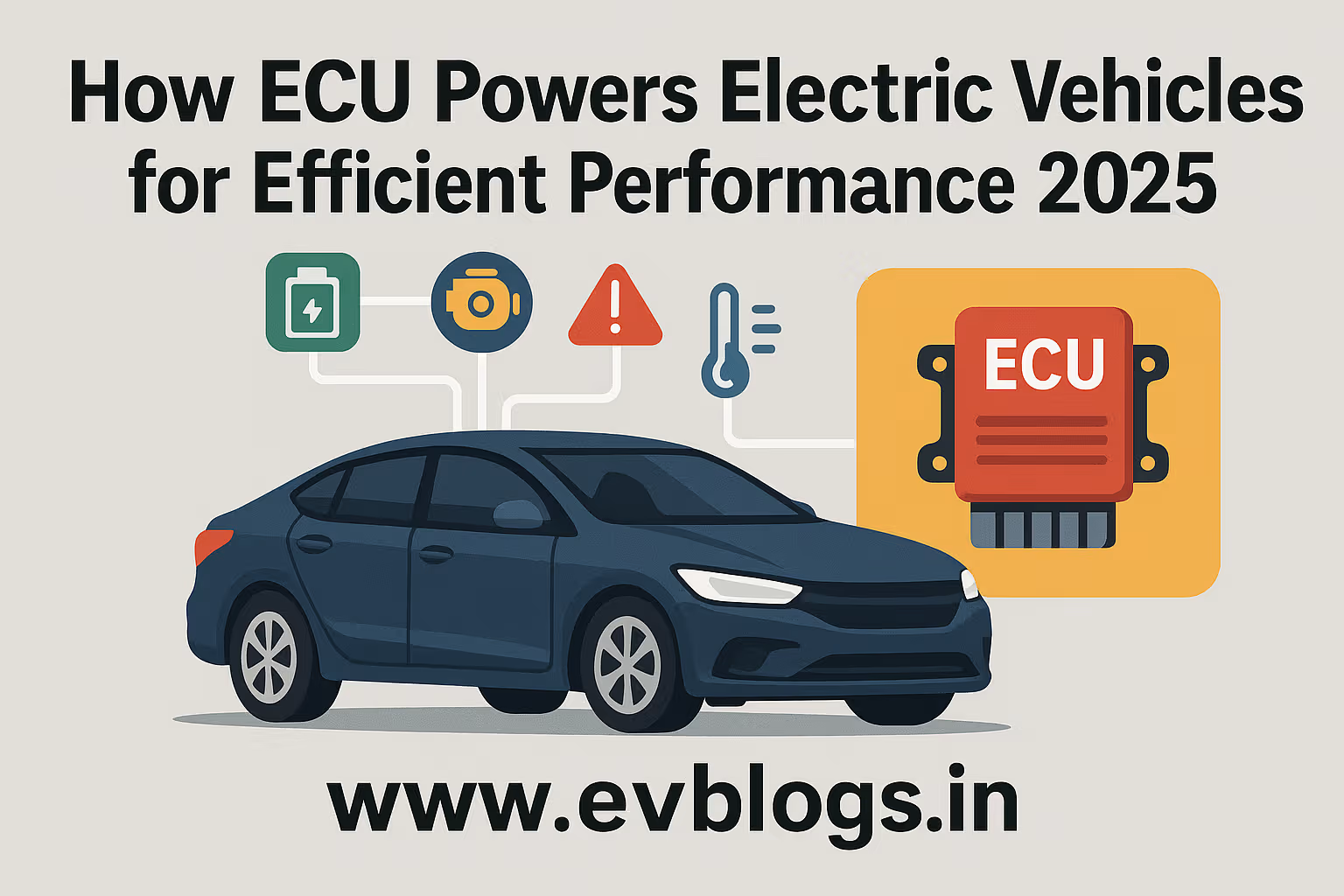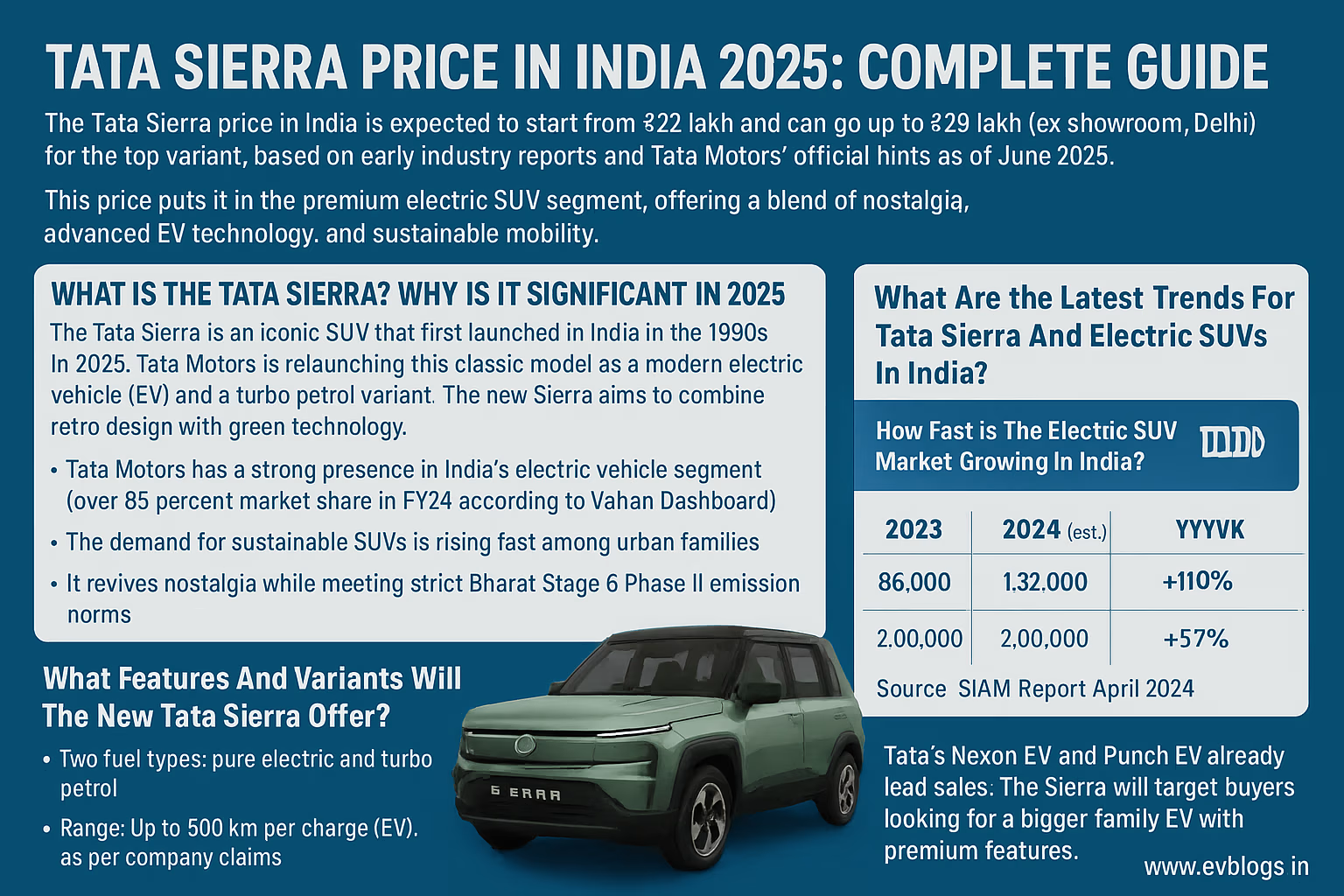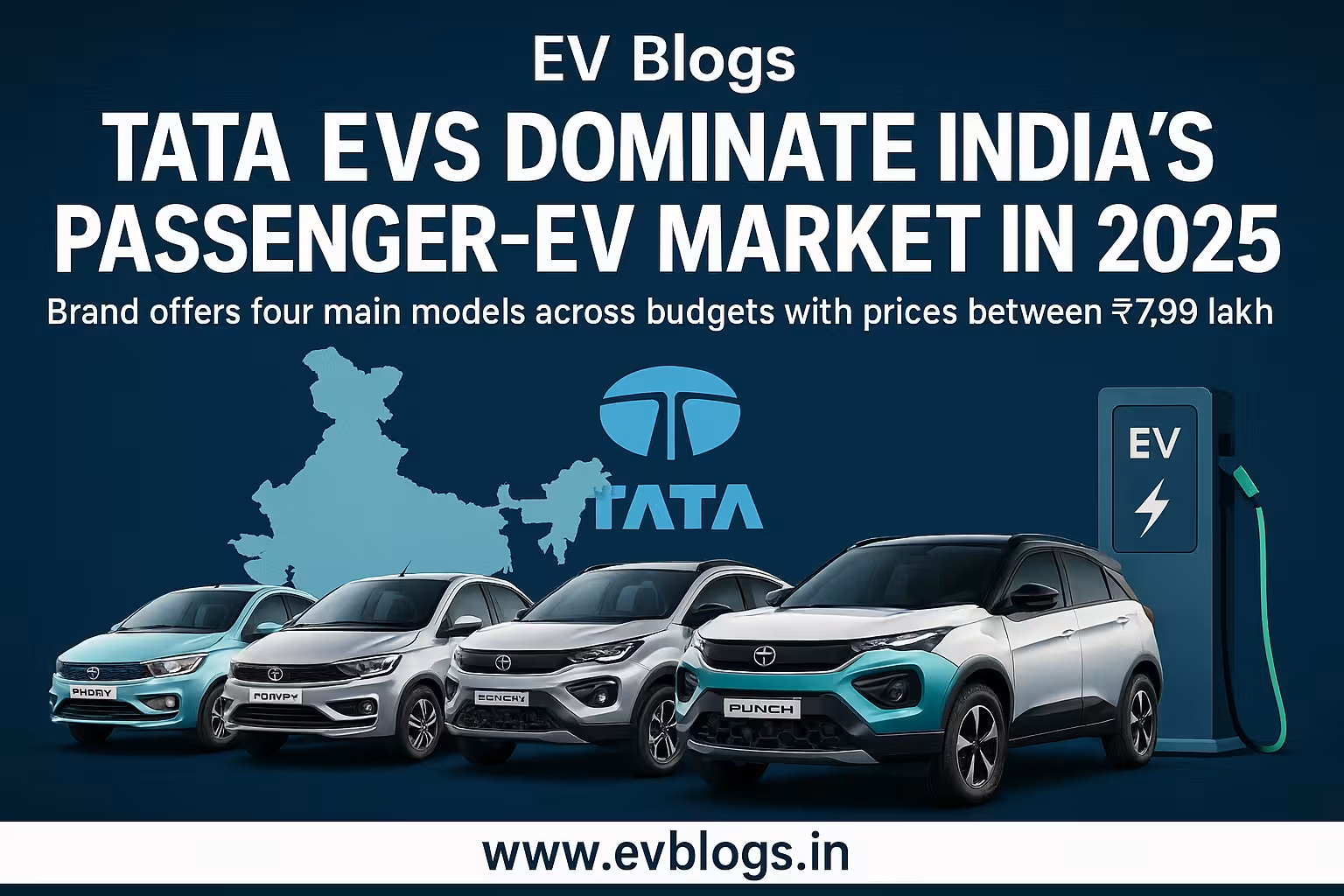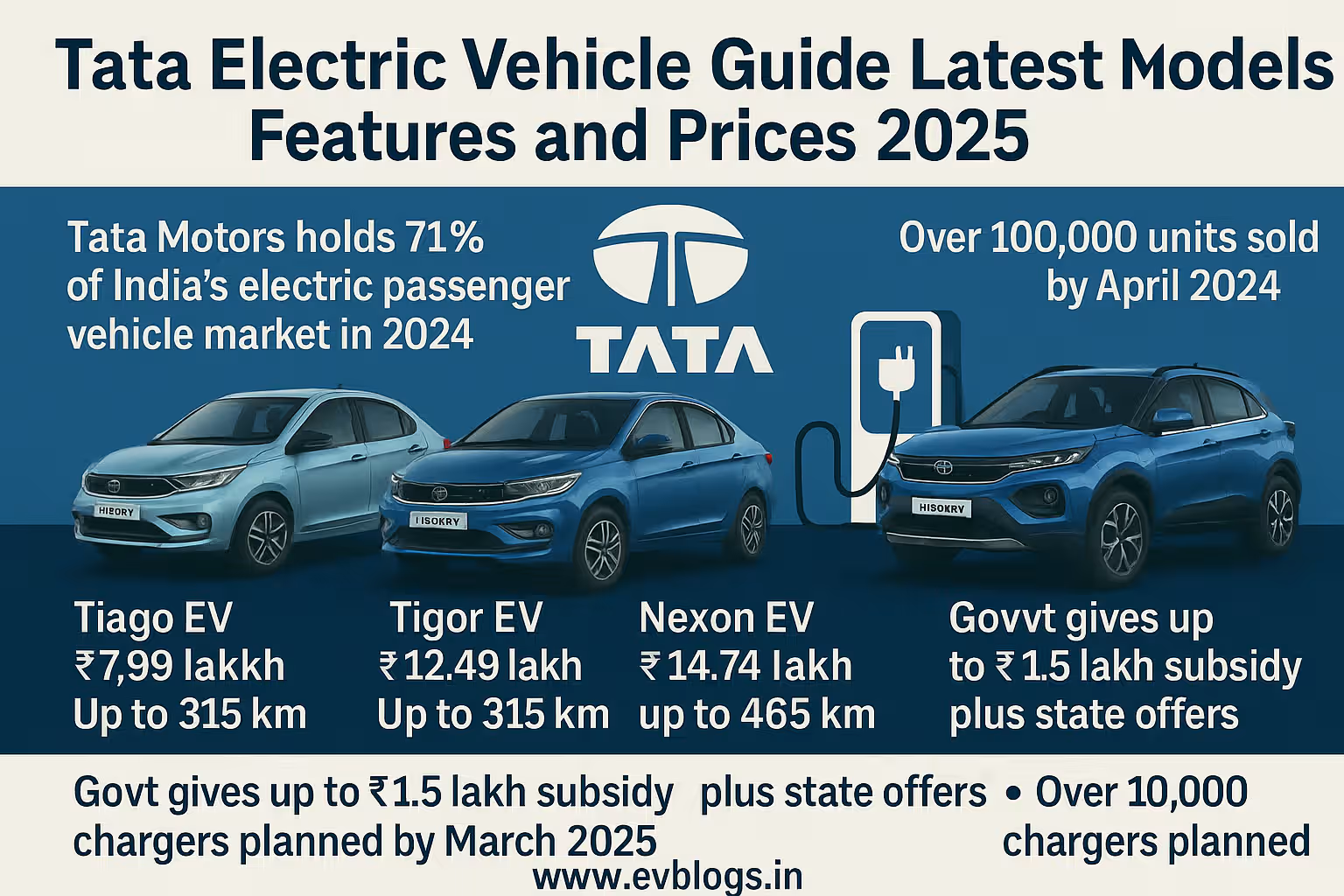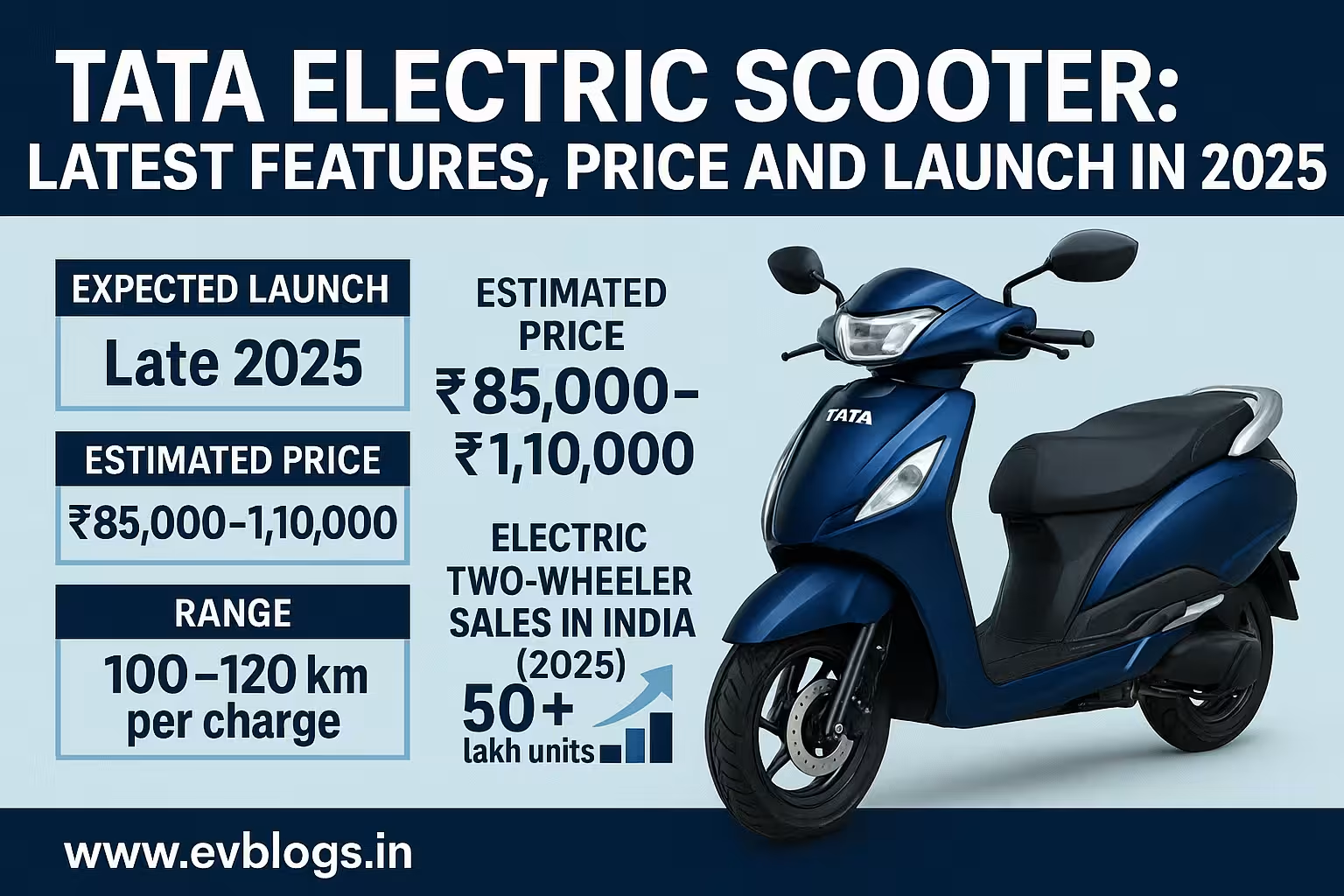Hedhvick Hirav
Hedhvick Hirav is a dedicated EV researcher and editor with over 4 years of experience in India’s growing electric vehicle ecosystem. Their contributions have been recognized in leading sustainability publications and automotive journals.
Summarize & analyze this article with
Choose an AI assistant and open this article directly:
Tip: if the AI doesn’t fetch the page automatically, paste the article URL manually.
What is EV Subsidy in India and Why Does it Matter in 2025?
In 2025, electric vehicle (EV) subsidies in India continue to play a huge role in making EVs more affordable, attractive, and accessible for everyday people like you. The Government of India, along with various state governments, offers financial incentives and benefits to encourage the purchase and use of electric vehicles — from two-wheelers to cars, buses, and commercial vehicles.
Agencies like the Department of Heavy Industries, Ministry of Power, and Niti Aayog work together to manage policies such as FAME II (Faster Adoption and Manufacturing of Hybrid and Electric Vehicles), which has been regularly extended and revised.
For you as a buyer, understanding these subsidies could mean saving tens of thousands of rupees or more, reducing your total cost of ownership, and even enjoying special perks like free registration, priority parking, and tax rebates.
- In 2025, most major states offer their own state-level EV subsidy with eligibility rules and application processes.
- The central government continues to provide incentives under FAME II, with plans for a possible FAME III in the pipeline.
- Subsidies are usually given for electric two-wheelers, cars, public transport, and even charging stations.
Did You Know?
According to NITI Aayog, India could save up to ₹1.2 lakh crore in oil imports by 2030 if EV adoption targets are achieved.
Which Types of Electric Vehicles are Eligible for Subsidies in India 2025?
You’ll be happy to know, in 2025, subsidies are available for a range of EVs, and these differ based on what you wish to buy:
- Electric Two-Wheelers: Scooters and motorcycles for personal use.
- Electric Cars: Both personal and commercial, including hatchbacks, sedans, and SUVs.
- E-Rickshaws & E-Autos: Especially popular for urban transport.
- Electric Buses: For public transport, operated by state transport undertakings.
- Light Commercial Vehicles: Delivery vans and cargo 3-wheelers.
Key Requirements:
- Vehicles must meet government standards for battery capacity, range, and localization.
- Only models listed and approved by the government for subsidy are eligible.
- You usually need to be the first owner to claim the subsidy (second-hand vehicles are NOT generally eligible).
Expert Insight
In 2024-2025, electric two-wheelers are still the most popular segment for subsidies in India, accounting for nearly 70% of applications under FAME schemes.
How Much is the EV Subsidy Amount in India in 2025? Central & State-wise Compared
The value of the subsidy you get varies widely, depending on both the type of vehicle and the state you live in. Here’s the up-to-date snapshot for 2025:
Central Government Subsidy (FAME II, valid till March 2025; subject to revision)
- Electric Two-Wheelers: ₹10,000 per kWh battery capacity, capped at 15% of ex-showroom price.
- Electric Cars (Fleet/Commercial): ₹10,000 per kWh, limited to certain models.
- E-Rickshaws & 3-Wheelers: Up to ₹30,000 per vehicle.
- Electric Buses: Up to ₹50 lakh per bus.
- Caps and eligibility limits set by the Central Government; may be revised post-March 2025.
State-wise Subsidy Comparison Table (2025)
| State/UT | EV Type | Amount/Unit | Max Subsidy | Road Tax Waiver | Reg. Fee Waiver | Year Active |
|---|---|---|---|---|---|---|
| Delhi | 2-Wheelers | ₹5,000/kWh, up to ₹30,000 | ₹30,000 | 100% | 100% | 2025 |
| Maharashtra | 2-Wheelers | ₹5,000/kWh, up to ₹10,000 | ₹10,000 + ₹15,000 early bird | 100% | 100% | 2025 |
| Gujarat | 2-Wheelers | ₹10,000/unit, max ₹20,000 | ₹20,000 | 50% | 100% | 2025 |
| Tamil Nadu | 2, 3 & 4Ws | - | No direct subsidy | 100% | 100% | 2025 |
| Karnataka | All types | - | No direct subsidy | 100% | 100% | 2025 |
| Telangana | 2 & 3-Wheelers | ₹5,000/kWh (2025 policy pending update) | ₹15,000 | 100% | 100% | 2025 |
| Rajasthan | 2-Wheelers | ₹5,000/kWh, up to ₹10,000 | ₹10,000 | 75% | 75% | 2025 |
| Kerala | All types | No direct, but interest subvention | - | 50% | 100% | 2025 |
| Haryana | All EVs | Up to ₹10,000 (based on segment) | ₹10,000 | 100% | 100% | 2025 |
| Uttarakhand | All EVs | Up to ₹10,000 (innovator/maker) | ₹10,000 | 100% | 100% | 2025 |
What does this mean for you?
- The highest direct subsidies for individual buyers in 2025 are still in Delhi and Gujarat.
- Some states (Tamil Nadu, Karnataka) focus on zero road tax instead of cash incentives.
- Early bird bonuses in Maharashtra apply only if you register your new EV before a certain cut-off date.
- Other states like UP, MP, Punjab, and West Bengal offer incentives mainly for commercial or public-use EVs.
Did You Know?
As of 2025, nearly 75% of new e-scooters sold in Delhi, Gujarat, and Maharashtra are registered with the help of both central and state subsidies.
When and How Can You Claim EV Subsidy in India 2025?
Claiming your subsidy this year is more streamlined than before. Here’s what you need to know:
- Purchase New: Subsidies are offered only on new vehicles, purchased from registered dealers.
- Government List: Ensure your EV model is on both the FAME II and your state’s approved list.
- Dealer-Assisted: Most major brands (Ola Electric, Ather, Tata Motors, etc.) process subsidies directly at the time of sale — so you usually pay the discounted price upfront.
- Documentation: Provide your Aadhaar, PAN, address proof, and vehicle details during the buy process.
- Application: Any additional state or municipal incentives may need a separate online or offline form. Respect deadlines for “early bird” offers.
You’ll receive the discount “upfront” if the dealer participates, or as a direct bank transfer/reimbursement in rare cases.
- Some states also require you to upload RC copy, invoice, unique vehicle ID, to state transport department portals.
Expert Insight
In 2025, most EV buyers in India report receiving state and central subsidies together at the point of sale — making EVs cheaper than ICE (petrol/diesel) models in many segments.
Which Indian States Offer the Best EV Subsidies in 2025?
If you are prioritising maximum discounts, the following regions are most attractive as of 2025:
- Delhi: Up to ₹30,000 subsidy on two-wheelers, extra on scrapping old vehicles, plus 100% road tax and registration waivers.
- Gujarat: High direct subsidies, especially for affordable scooters and e-rickshaws.
- Maharashtra: Attractive early bird benefits (if you buy/register early in policy period).
- Telangana / Rajasthan / Uttar Pradesh: Good for certain two- and three-wheelers, especially for commercial usage.
Besides direct cash benefits, cities like Bengaluru, Chennai, and Hyderabad offer perks like exclusive EV parking, congestion-free lanes, or toll waivers on select routes.
Did You Know?
Delhi was the first Indian city to cross 2.5 lakh electric vehicle registrations, mainly due to its aggressive EV subsidy policy.
Why Should You Buy an Electric Vehicle Now with 2025 Subsidies?
With increasing fuel prices and pollution concerns, 2025 is a smart year to consider switching to an EV. Here’s why subsidies make it extra attractive:
- Lower Purchase Cost: Subsidies reduce the upfront price by up to 25% for some models.
- Save on Running Costs: EVs are 70% cheaper to operate vs. petrol vehicles due to lower electricity and maintenance bills.
- Special Policy Perks: Enjoy priority parking, zero registration fees, and reduced road tax.
- Future-Proof: More cities are moving towards low or zero emission transport, so early buyers benefit from better resale and policy advantages.
Real user stories (2024-2025):
- Sneha from Ahmedabad saved ₹40,000 on her e-scooter in 2025 thanks to clubbed subsidies, now she spends ₹300/month on charging vs. ₹2,200 on petrol earlier.
- Rahul in Delhi got scrapping benefits for his old CNG auto and used the incentive toward a new e-auto — cutting monthly EMI by 20%.
Expert Insight
Most consumer surveys in 2025 show Indian EV buyers recover the “extra” premium paid for electric vehicles in under 3 years, thanks to savings from subsidies and lower fuel costs.
What Documents and Eligibility Criteria Should You Know for EV Subsidy in 2025?
Planning to claim your EV subsidy? Here is what you need to prepare:
Documents Required
- Aadhaar Card for ID and address proof
- PAN Card for tax compliance
- Bank account details (for direct transfer, if any)
- Purchase invoice and vehicle registration certificate (RC)
- If you’re availing “scrapping” benefits: Certificate from authorized scrappage facility
Eligibility Guidelines
- You must be the first owner of the new EV (no subsidy on transfer of ownership/second-hand vehicles)
- Vehicle must be purchased and registered in the subsidy-eligible state
- Vehicle brand/model must be listed on approved FAME II or equivalent state portal
- Application (if needed) must be filed within prescribed date window (varies by state)
Did You Know?
Many Indian states also reward start-ups or local manufacturers with extra grants/interest subvention for making or assembling EVs in that state.
Which are the Most Subsidy-Friendly Electric Vehicles in India in 2025?
With dozens of eligible models, here’s a quick rundown of popular choices that maximize your subsidy as of 2025:
| Brand | Model | Price (After Subsidy, est.) | Subsidy Amount (Total, 2025) | State-wise Top Benefit | Range/Charge |
|---|---|---|---|---|---|
| Ola Electric | S1 Air | ₹1,09,000 | Up to ₹45,000 Delhi/Gujarat | Delhi, Gujarat | 125 km |
| Ather Energy | 450S | ₹1,05,000 | Up to ₹42,500 Delhi | Delhi | 115 km |
| TVS | iQube | ₹1,20,500 | Up to ₹38,500 Maharashtra | Maharashtra | 100 km |
| Bajaj | Chetak | ₹1,15,000 | Up to ₹34,000 Maharashtra | Maharashtra | 95 km |
| Tata Motors | Tiago.ev | ₹8,69,000 | Up to ₹1,50,000 Delhi | Delhi | 250 km |
| Tata Motors | Nexon EV | ₹14,50,000 | Up to ₹1,50,000 Delhi | Delhi | 312 km |
| Mahindra | eVerito | ₹10,15,000 | Up to ₹1,25,000 Gujarat | Gujarat | 180 km |
| MG Motor | ZS EV | ₹22,88,000 | Up to ₹1,50,000 Delhi | Delhi | 419 km |
| Hyundai | Kona Electric | ₹23,75,000 | Up to ₹1,50,000 Delhi | Delhi | 452 km |
| Hero Electric | Optima CX | ₹78,000 | Up to ₹22,000 Gujarat | Gujarat | 82 km |
Detailed List:
- Ola S1 Air, Ather 450S, and Hero Optima CX: Best for urban commutes; maximum two-wheeler subsidy in Delhi and Gujarat.
- Tata Tiago.ev & Tata Nexon EV: India’s most value-friendly electric car duo, netting high subsidies in Delhi/NCR, Maharashtra, Gujarat.
- TVS iQube & Bajaj Chetak: Wide dealer network; efficient options for Indian conditions; mid-range benefits.
- MG ZS EV & Hyundai Kona: For those seeking longer range and premium features—Delhi gives the best benefit for SUVs.
- Mahindra eVerito: Preferred commercial sedan among fleets/OLA-Uber drivers in western India.
Did You Know?
Ola Electric, Tata Motors, and Ather together accounted for over 45% of all central subsidy claims in India in 2025!
How Does the EV Subsidy Process Differ Across Top Indian States in 2025?
State policies are evolving, and as a buyer you should know the process in your area:
Delhi
- Online portal for subsidy tracking (delhi.gov.in portal)
- Dealers apply subsidy discount directly at sale
- Old vehicle scrapping brings additional cash back
Gujarat
- Subsidy disbursed via dealer discount; digital documentation mandatory
- Dedicated state help-desks for delay/grievances
Maharashtra
- Early-bird window: bonus for buyers before certain date every year
- Most benefits credited at sale; few claims handled post-sale via RTO
Tamil Nadu & Karnataka
- No direct cash subsidy, but 100% road tax & registration exemption
- Charging infra gets extra state push
Rajasthan, Telangana, Haryana
- Hybrid approach — both direct subsidy & tax waivers; digital and offline process both available
Expert Insight
In states like Kerala and Karnataka, several private lenders offer low-interest EV loans in addition to state benefits, further lowering your ownership cost.
Which Factors Should You Consider When Deciding Where to Buy Your EV in 2025?
Before finalizing your electric vehicle purchase and taking advantage of maximum subsidy, here are crucial points for you to weigh:
- State of Registration: Some states offer more benefits or easier processing for “local” buyers.
- Model Availability: Not all EVs are eligible in every state — always check eligible model list.
- Dealer Support: Reputed brands align better with central/state schemes, giving hassle-free buying experience.
- Charging Infrastructure: Subsidized charging points, home charger benefits, or exclusive EV zones — varies by city/state.
- After-Sale Support: Some states offer battery warranty assistance or priority servicing for subsidized EVs.
Did You Know?
If you move your EV to another state soon after purchase, you may lose your subsidy benefit during re-registration. Always check state terms!
How Will the Future of EV Subsidies in India Look Beyond 2025?
While 2025 is shaping up as the most generous year yet for EV buyers, new announcements are regularly being made:
- The government is reviewing the FAME II scheme’s successor (FAME III) for increased focus on public transport, charging infra, and battery-swapping.
- Some states are evaluating “end of life” incentives for scrapping old polluting vehicles and shifting fleets to electric.
- Talks of GST cuts on EV parts, batteries, and charging infra are underway in Parliament.
- With India aiming for 30% new EV sales by 2030, expect more aggressive city-based or pollution-zone incentives soon.
Your benefit? The sooner you buy in 2025, the more likely you’ll enjoy both current and “locked-in” perks — schemes might get revised or reduced as sales grow.
Expert Insight
Consumer lobbies recommend asking your dealer or checking government websites monthly in 2025, as many “early bird” or special top-up subsidies are first-come-first-serve.
What Are First-Hand Experiences & Real User Stories of Buying an EV with Subsidy in India 2025?
Rohit, Mumbai: “I bought my electric scooter in Jan 2025. The dealer handled all the paperwork for the Maharashtra state subsidy. I received the upfront discount plus an early bird bonus — total savings of ₹25,000. Registration, insurance, and charging support were done in less than a week!”
Lakshmi, Bengaluru: “I moved from Chennai to Bengaluru and realized my new electric car attracted 100% road tax exemption here. Although Karnataka didn’t provide a cash subsidy, I save nearly ₹1 lakh upfront thanks to zero road tax and discounted parking. No regrets!”
Sunil, Lucknow: “My business switched to 5 new e-autos in Feb 2025. As commercial buyers, we got a custom state incentive worth ₹65,000 per vehicle from the Uttar Pradesh government. Running cost has dropped by more than 60%.”
Rekha, Ahmedabad: “I claimed both FAME II and Gujarat state subsidy for my Hero Optima e-scooter — paid just ₹78,000 (almost ₹22,000 less). The dealer explained everything, and state helpline helped with a minor documentation glitch.”
Did You Know?
In a 2025 survey, over 87% of EV buyers in India said state and central subsidies were the main reason they chose electric over petrol/diesel vehicles.
What Are Important Disclaimers, Caveats, and Tips About EV Subsidies in 2025?
Before you purchase, keep these practical points in mind:
- Subsidy rates and eligibility can change — check official government sources and check with your dealer before booking.
- Some subsidies are limited to a maximum number of vehicles or until policy funds run out (first come, first serve).
- Processing times for state claims can vary; digital applications speed things up.
- Second-hand EVs, fleet transfers, or out-of-state registrations usually don’t qualify for buyer subsidy.
- Always keep original documents and receipts safe for future warranty, resale, or subsidy audits.
Expert Insight
The Ministry of Heavy Industries regularly probed wrongly claimed subsidies. Always use authorized dealers and never share personal documents with unverified agents or brokers.
What is the Final Verdict? Should You Buy an EV in India in 2025 for the Best Subsidy?
If you’re considering an electric vehicle in 2025, this is genuinely the best time to buy in India.
- Most states are offering their highest direct subsidies ever, especially for two-wheelers and cars.
- Central (FAME II) benefits are confirmed valid till March 2025, with potential extension or revision.
- You can club multiple savings: subsidy, tax waiver, insurance deals, and cheaper fuel bills.
- Leading cities have set up supportive infrastructure and policy perks, ensuring a smooth EV experience.
Decision Tip:
If you want the lowest upfront cost and highest all-in savings, prioritise buying (and registering) in states like Delhi, Gujarat, or Maharashtra, and complete your purchase early in 2025, before policy revisions or fund exhaustion.
Always check your state’s latest policy and approved model list before booking. You can find the most updated subsidy/disbursement info on central (fame2.heavyindustries.gov.in) and state transport department websites.
FAQs on EV Subsidy in India 2025
Q1. What if I buy my EV in one state and move to another?
A: You may lose the original subsidy benefit when re-registering in a new state. Always check both states’ rules before shifting your vehicle.
Q2. Can I claim subsidy for more than one EV as a single buyer?
A: Usually, subsidies are limited to one EV per Aadhaar/cardholder per policy period, but check your state-specific rules for family or commercial exceptions.
Q3. How long does it take to receive the subsidy amount?
A: For most buyers, the discount is applied upfront at purchase. If application/claims are needed, most states process within 30-90 days.
Q4. Are subsidies available for electric bicycles or e-cycles?
A: As of 2025, central FAME II and most state policies focus on scooters, bikes, cars, and 3-wheelers. A few pilot schemes for e-cycles exist in Delhi and Pune.
Q5. Will the central government subsidy (FAME II) continue after March 2025?
A: The government is reviewing its EV policies. Watch official announcements for FAME III or revised eligibility after March 2025.
This information is accurate as of June 2025. However, government EV policies and subsidy amounts are subject to change. Always consult official sites or authorized dealers for the most current updates before making your decision.


